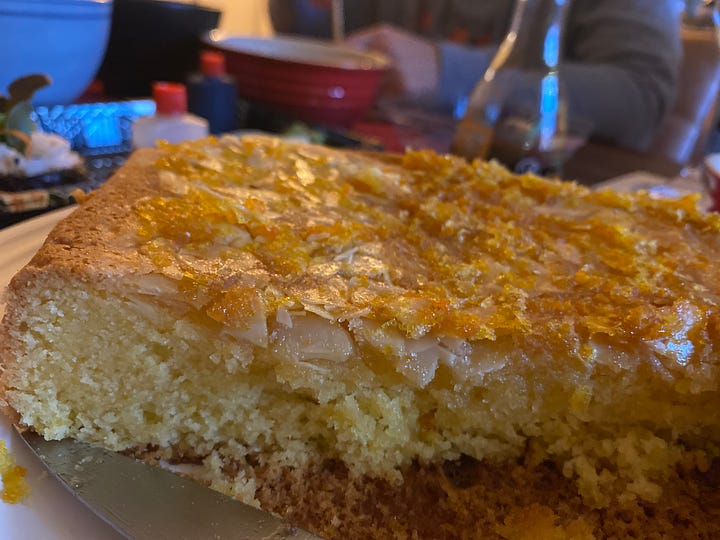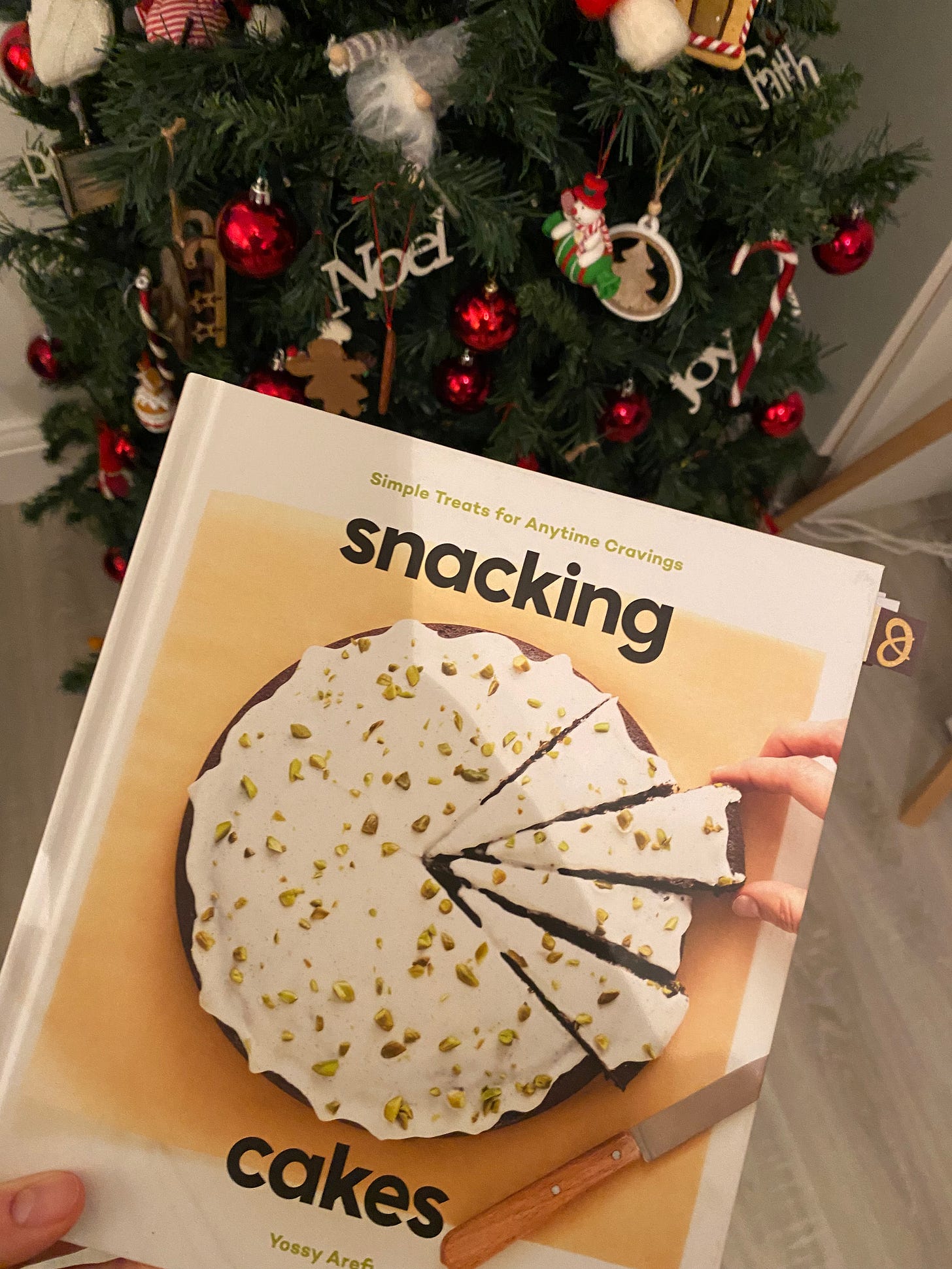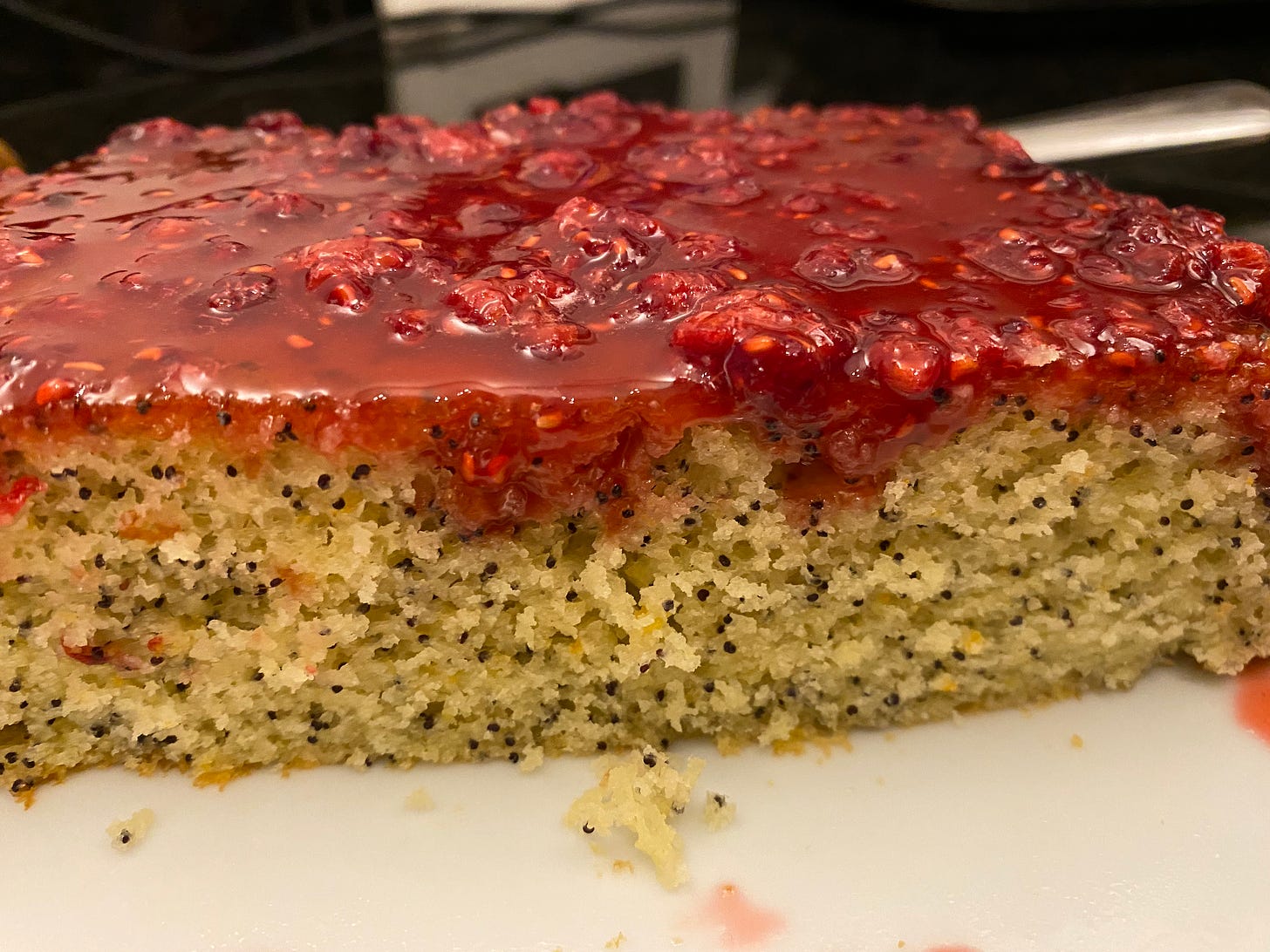I hope it’s clear from the title but please be aware that this post discusses disordered eating.
One of my favorite Christmas gifts this year was Yossy Arfi’s ‘Snacking Cakes’*. I mentioned it to my partner as a potential ‘cook my way through January’ project and she kindly let her family know that it might be a good gift for me. I had been planning to get it out of the library, not wanting to spend money on something I thought would be a fleeting passion. Boy was I wrong!
Since I opened the gift on Christmas Eve (Italians stay up til midnight to open gifts!), I’ve lost count of the number of times I’ve flipped through it. I’ve marked my favourites, ordered a special baking dish, made two separate shopping expeditions for ingredients, and have been texting multiple friends on several continents photos of the results.
The book has a very simple premise. Each of the 50 single-layer cakes uses the same method, baking tin and basic equipment. Many come with a suggested glaze/icing and there’s a series of ‘whips’ (citrus whip, __ whip, __ whip etc) as recommended accompaniments. It’s very much in keeping with my ‘continuous small treats’ life philosophy. These are the kinds of cakes you store in the microwave, visiting whenever you need a little pick me up. They are the right blend of structure (same basic process) with flexible (riffable with toppings and reliable flavours, like citrus, spices, chocolate and vanilla).
At the time of writing, I’ve made three cakes in three days. I took a break today only because I wanted to give us a chance to eat what I’ve made and because I couldn’t bear to deal with an over–crowded dishwasher for what felt like the zillionth day in a row!
“Bakery good,” my partner said when I served the first cake. It’s a citrusy poppy seed cake served with a raspberry glaze. It’s dense but moist, rich but not heavy with a pleasant tang of fruit to offset the sweetness. It was a 10/10 cake. Will definitely make again.
Cake 2 was the Olive Oil and Almond Chocolate cake, which was requested by my love. She loves all those flavours though we were both a little disappointed by the results. The almond flour adds to the texture but not the flavour and aside from the richness, the olive oil disappears. Still, it’s a delicious chocolate cake topped with raspberries so we gave it a 7.5/10.
Cake 3 was the only gluten free option in the book. It’s made with almond flour and maize meal and topped with a delicious citrusy syrup. I loved this one - the batter is yellow like the sun which can’t help but spark joy on a freezing day. Will add more almonds next time. 8.5/10


Now I’m just left to wonder why I didn’t buy the book sooner.. I heard Julia Turshen recommend it on some long forgotten podcast back when it first came out in ___ and read about it in The New Yorker too. Despite how much I love cooking, I didn’t even consider buying it.
For me, back then, it felt both too expensive and too frivolous. I just couldn’t justify a book that would encourage me to make cakes that I would invariably eat (I can’t waste food!) and then, my screwy logic went, I’d get fat. I hate admitting that. It’s such a loaded, unkind word. I’ve written before about my history with disordered eating and though I’ve been ‘recovered’ for years, I still don’t feel myself to be on solid ground. Don’t get me wrong, I am physically fine. But mentally, the lies and thought patterns of the disease still linger in my neurons.
It’s a complicated thing to navigate, an ever-changing collection of neuroses and impulses that could be health-ful or could be a slippery slope toward the worst habits of my brain. I don’t drink alcohol because I don’t like it. I don’t like what it does to my body and it takes zero willpower to ignore a powerful neurotoxin that happens to have excellent PR. Mostly, over the past few years, I’ve avoided sugar. I don’t have much of a sweet tooth (3 cakes in 3 days, notwithstanding!) and found that it makes me snappy, spotty and vaguely anxious. I am someone who does better with self-imposed rules than moderation*. I prefer to opt out of something, rather than spending precious willpower making decisions about whether or not I’ll have it. And when? And why? But are these ‘rules’ health-ful, or are they the vestiges of disordered eatting? When is it a choice I make (or a habit I build) because I want to feel good, and when is it just another way to punish myself, to restrict my pleasure, to make my world smaller? There’s no answer to these questions. It’s a complex, ever-evolving question that rears its head with particular force every January.
And we’ve just come through the festive season when, a friend joked, we get our year-end psychotherapy exam in the form of extended time with family. Christmas is the only time of year when, motivated by a blend of desire and obligation, I see certain people. It’s the only time of year when I have time for both the visits themselves and processing the feelings that arise from amiably drinking tea with people who stir up all your family shit. Family shit that I parcel away during the rest of the year while living the life I’ve made for myself far from my past.
My partner and I also took advantage of the time between Christmas and New Years to do a trial at a local gym. I loved the pool and playing tennis for the first time in a decade, but the gym’s fatphobic messaging made me both angry and scared. Be. Some. Body. read the slogan along one wall, punctuation errors intended. Much of it seems innocuous enough - “Be the best version of yourself” reads the cursive scrawl on another wall - but it’s risky for me regardless. I’ll be returning to work soon too, where there is sure to be talk of slimming challenges and Operation Transformation.
None of this body negativity is directed at me specifically. I am a straight-sized person who is not perceived as fat, but my recovery feels tenuous enough that I am hyper-aware of it. There are moments, especially in January, when my disordered brain automatically thinks the worst. And there are many moments when my life is so rich and full that I barely think about my body or its size. And there are moments when I think I’m making a big deal out of nothing. This body of mine has been through a lot. It has withstood enormous trauma, several years of severe mental illness and several bouts of serious physical illness. It has been sliced open and sewed back together again. It survived. To care about something as puny as ‘body image’, after all that, feels vaguely ridiculous. And yet here I am, trying to work through my thoughts and feelings on the page in the hope that I’ll find a path through January’s toxic diet talk.
A few months ago, while eating cheese, I decided I was OK with having to buy jeans in a larger size if it meant I could regularly access the pleasure of food. But that’s the wrong way to think about it. I don’t want some foods to be ‘good’ and others to be ‘bad’. I don’t want to think about each bite as something that will need to be offset, either by exercise or restriction. I don’t want to think about it at all.
Some of my delight, cooking my way through ‘Snacking Cakes’, is rooted in the fact that I didn’t buy it. It was a well chosen Christmas gift suggested by my partner who often knows what I need more than I do. It arrived at a time when I’m trying to loosen some of my rigidity around food and eating. Looking back, I can see how ‘anorexic thinking’ has infected so many parts of my life. As my recovery accrues a little more each year, I try to loosen some of those restrictive impulses. It’s not perfect. It never will be. But it’s something. And in the meantime, I’ve plenty of cakes to enjoy.
* I’ve found this personality framework useful for understanding my impulses, be it on this topic or anything else. This podcast, on diet culture in the workplace, brought me some solace that at least it’s not just me. After writing this, I also listened to this podcast (twice!).






